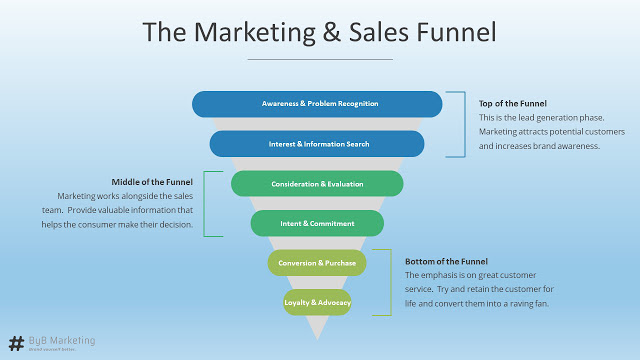It’s Valentine’s season again.
That time of year when sparks fly and love fills in the air.
In honor of the big “V” — and because I love any excuse to use a cheesy metaphor — it’s the perfect time for you to take stock of your online marketing and ask yourself the question, “Am I romancing my audience?”
The truth is … you should be.
Why? Because every relationship, just like every sales funnel, must go through four stages in order to be successful.

 1. The conversational opener
1. The conversational openerNeil Strauss, in his bestselling book The Game: Penetrating the Secret Society of Pickup Artists, defines the “opener” as a “prepared script used to start a conversation with a group of strangers; it’s the first thing anyone who wants to meet women must be armed with.”
Notice how easily we could replace the words “strangers” and “women” with “prospects” and “leads” to build a glossary-worth definition of every sales funnel’s first stage.
However, the key word to focus on is “conversation.”
In marketing as in romance, openers go sideways in two ways.
First, you don’t speak directly to your audience. Brandon Turner’s“Copywriting Hacks Designed to Give Your Business a Boost” nails this:
You. Are. Not. A. Robot. Affirmative.
Please don’t talk like one. When we talk face to face, we have no problem saying things in a casual tone. But whenever people sit down at a computer to write copy (for web pages or emails), they tend to go all formal.
Avoid the temptation to litter your marketing with jargon-heavy, technical terms. Instead, aim at just talking — one genuine human to another.
Second, you don’t grab their attention.
Attention doesn’t mean running up to your prospects and proposing marriage. Your entire goal in the opener is simply to get your prospect interested enough to talk back. That’s it.
2. The first date
So, you got a response — and it’s a yes.
A brand new prospect just clicked through your ad and has arrived at your landing page. Now it’s time to get acquainted, just like you would on a first date.
First dates can be taxing, but they don’t need to be. And neither does the second stage of your funnel.
Here’s the key: make it about them, not you. So, don’t focus on your features, products, service or expertise. Instead, focus on them: their problems, obstacles, desires, dreams, wants or fears.
While it really is that easy to turn your focus toward your audience, just remember (once again) don’t get ahead of yourself.
The only goal of the dating stage is to entice your audience and build enough trust to move onto the commitment.
3. The initial commitment
Oh, the commitment.
Unlike many real-life relationships, good marketing follows through. It delivers on its promises: consistently.
In fact, the no. 1 “Very Expensive Marketing Mistakes You Need to Avoid” is “false promises.” In other words, inconsistency kills commitment.
You should also build your relationship with prospects by spending time with them. Don’t do this by constantly inviting them over to your place (i.e., sending them email links to your website).
Instead, find out where they naturally congregate on places like social media and go to them.
Offer help and education, not just products and pitches. Above all, give them special experiences. This is precisely the “millennial marketing tip” Kelly Lovell draws from Taylor Swift’s love affair with her fans:
“Marketers need to consider how they [can] create similar, meaningful experiences for their own consumers. This doesn’t require being as ambitious as Taylor Swift, with her A-list guests! But consumer appreciation luncheons, movie screenings, invite-only game nights and family events are all great ideas.”
4. The long-term relationship
Shockingly, this is the easiest marketing stage, but it’s also the most overlooked.
Plain and simple: Be good to your lover and your customer alike.
Just because you’re in a long-term relationship, doesn’t mean you can start ignoring them.
If anything, you should give your current customers even more attention than your prospects. This is because your existing customers aren’t just your most reliable source of recurring revenue, they’re also your easiest source of new revenue.
As eConsultancy reported last year, “The probability of selling to an existing customer is 60-70 percent. The probability of selling to a new prospect is just 5-20 percent.”
And, according to the White House Office of Consumer Affairs, loyal customers are on average worth up to 10 times more than their first purchase.
This means, don’t just get engaged, stay engaged. Answer questions quickly. Offer loyalty programs. And send out thank-you notes.
Customers remember companies that make them feel good, and the rewards are handsome.
There you have it, and just in time.
Four stages that can make a huge difference in the way you seduce, sell, and seal the deal with your prospects and customers.
Source – Entrepreneur.com


